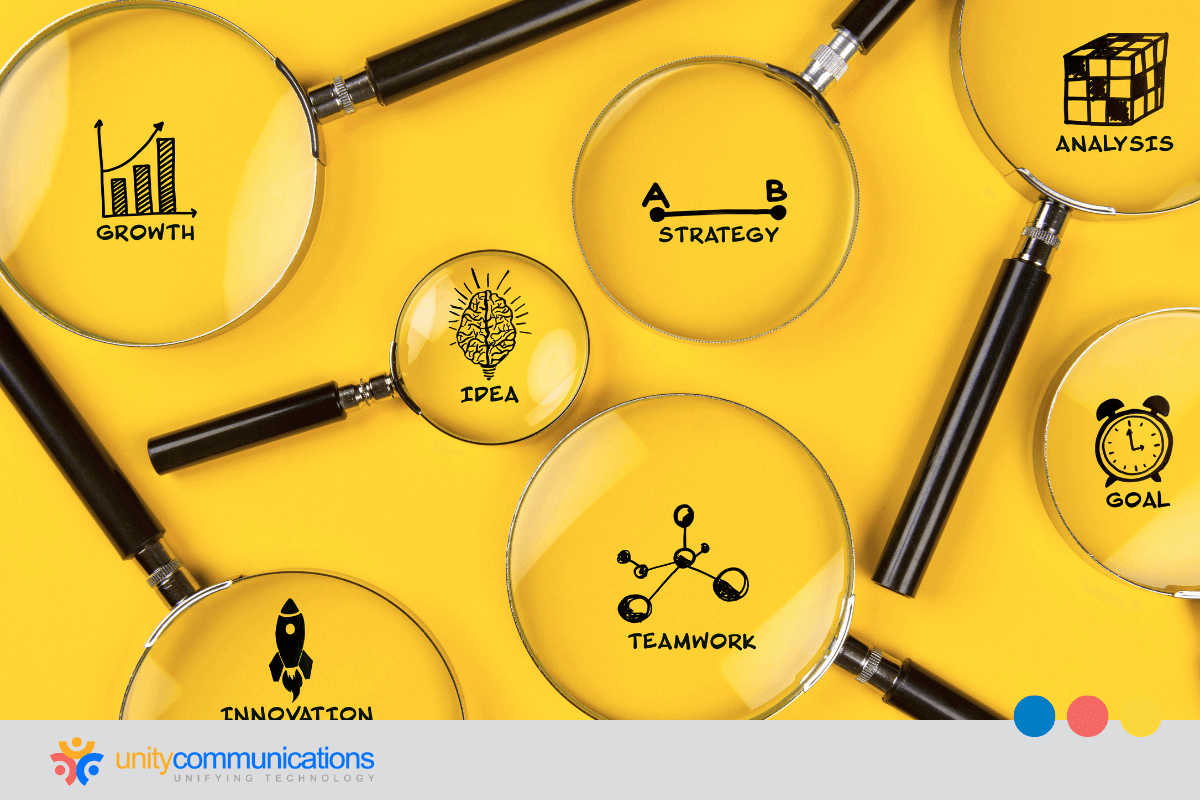Table of Contents
Philippine offshoring providers have been around since the 1990s. They gained widespread popularity as more global businesses and organizations realized the long-term profitability and other proven benefits of outsourcing to the country’s providers.
Offshoring is the practice of relocating some or most business operations to a country on another continent to capitalize on these benefits. Often, it requires hiring the expertise of a third-party service provider to guarantee success.
This article discusses the offshoring models available in the Philippines and other parts of the world. Keep reading to discover more.
What Are the Types of Offshoring Models?

Offshoring models can be categorized into the following:
- Business process outsourcing (BPO)
- Project-based or freelance
- Managed information technology (IT) services
- Dedicated team
- Multisourcing
- Build, operate, and transfer (BOT)
- Global delivery
Let us explore the details.
Project-Based or Freelance
One popular offshoring model is hiring third-party remote contractors per project. Engaging freelancers can be effective for specific projects since this arrangement is adaptable, straightforward, and easy to begin and terminate.
While a service provider usually handles customer service outsourcing in the Philippines, freelancers are independent professionals not connected to any company. They can manage your consumer support for a short period. For example, they can handle customer questions and issues in the next six months.
Consider the benefits of a project-based or freelance arrangement:
- Budget-friendly services. Generally, employing professionals with industry experience involves substantial pay. They receive regular salaries regardless of the volume and quality of outsourced tasks. However, since freelancers work on a per-project basis, the cost matches the services they render to clients.
- Good ability to work under pressure. Freelancers can quickly finish assignments. They are accustomed to working with tight deadlines and have no fixed schedules. So, if a freelancer receives the project request on Monday, they can accomplish it by Wednesday.
Here are some issues with this offshoring model:
- Insufficient dedication level. One of the downsides of hiring freelancers is a lack of commitment. Most independent professionals handle many jobs simultaneously to make the most of their time. They might fail to assess the breadth and time required to invest in a project.
- Unavoidable technological hiccups. Since freelancers are remote workers, internet connectivity and electricity supply are significant factors in their service delivery, especially in rural areas. It might take a day or two before the after-sales service crew can respond to fix power outages or disconnections.
Business Process Outsourcing (BPO)
BPO is an offshoring model in which a business delegates specific operations to a BPO company in the Philippines or any country in Asia, Africa, or Europe. These third-party organizations manage outsourced tasks based on well-defined and quantifiable metrics or key performance indicators (KPIs).
Check out some pros and cons of outsourcing to the Philippines and other offshoring destinations. Let us start with the advantages of BPO:
- Recruitment. The BPO provider handles hiring tasks, such as screening and interviewing applicants and onboarding and training new hires. These endeavors are time-consuming and costly.
- Scalability and flexibility. The third-party provider can scale the staff size or processes without disrupting current operations for better cost management.
- Expense reduction. This offshoring model converts fixed expenses into variable costs. The change translates to lower capital spending and better savings.
- Efficiency levels. The service provider handles processes with few delays, inaccuracies, and wastage, leading to better customer support and product or service quality.
- Core competencies. Outsourcing allows organizations to focus on high-value operations to build or enhance their competitive edge. The third-party provider assumes low-value tasks.
Here are the possible challenges of the model:
- Unexpected service costs. Some BPO providers have hidden rates or undisclosed fees. They might charge the client for unforeseen events, including abrupt and protracted work disruptions or staff dismissals.
- Shared personal files. When outsourcing to the Philippines or other regions, sharing confidential or sensitive data with a non-affiliate company is inevitable. Passwords, credit card numbers, and usernames might be exposed.
- Inadequate administrative control. This offshoring model allows the third-party provider to fully manage the outsourced processes. The client loses much control over the assigned tasks.
Managed IT Services
A managed IT service provider is similar to a business process outsourcing provider, except it focuses on technical support processes.
Its services include the following:
- Network operations. These manage, monitor, and resolve alerts on the client network’s performance and accessibility.
- Help desk. This addresses technical concerns, from protecting computer systems and troubleshooting to installing applications and fixing hardware problems.
- On-site escalation assistance. This dispatches competent contractors to the client’s physical office to replace or support employees in addressing certain IT issues.
- Security operations. This incorporates the client’s information security standards into its IT process to minimize cyberattacks.
Discover the perks of this offshoring model:
- Variable costs. The provider scales staff per business need or situation, so monthly charges change. The client only pays for the services delivered by the outsourcing firm and nothing else.
- Core business as the primary focus. The provider manages most IT processes, from staff productivity monitoring and employee training to system deployment and policy execution.
- Zero to low recruitment expenses. The company no longer needs to post job advertisements or evaluate, onboard, and train new technical workers. The provider supplies the client with skilled and experienced IT personnel.
The following are potential issues:
- Insufficient number of dedicated IT teams. Since it offers comprehensive services, the managed services provider might be unfamiliar with the nuances of specific clients. The absence of a dedicated IT staff might hinder its ability to meet the client’s IT needs.
- Reduced business-IT collaboration. The provider manages various accounts. It might not understand the client’s specific IT requirements in depth. Its main priority is to maintain its different accounts for profit.
Dedicated Team
Another offshoring model involves a long-term arrangement wherein the service provider delivers dedicated software development specialists to the client.
The third-party IT provider chooses expert talent based on the client’s requirements. The client can oversee the team or delegate tasks to the service provider’s project manager. The team works remotely from the service provider’s premises.
Check out the benefits of this offshoring model:
- Higher collaboration. This model encourages collaboration between the client company and the IT team, making long-term projects more effective. The team members also get more involved in the project, which aids in refining workflows, generating ideas or alternatives, and analyzing favorable and undesirable aspects.
- Focused approach. The team has minimal distractions since it focuses only on the project, developing creative solutions to problems, and increasing adaptability. This offshoring model lets you adjust the team to suit changing demands and specifications.
- Constant integration. The team can stay unchanged for the long haul, and the project can progress to the next level without expanding the team or forming a new one to support it.
Below are the possible drawbacks of having a dedicated team:
- Finding the right team is challenging. It might take a while to find the ideal team. The client must be completely active in choosing team members. Unsatisfactory outcomes might occur if you pick unsuitable candidates.
- The model is suitable only for long-term projects. The model is more effective for long-term and ongoing projects. The team will only mature together to become a well-oiled machine over time.
Build-Operate-Transfer (BOT)
BOT is an offshoring model consisting of three stages:
- The “build” stage requires establishing a business unit that covers every aspect, from deciding on facilities to implementing systems, hiring people, and sustaining the necessary management and regulatory structure.
- The “operate” stage includes overseeing offshore projects. Program administration, expansion, maintenance, improvements, and product assistance are all part of this process.
- The “transfer” stage turns over the projects to the client, including the assets and the operations. Project ownership typically occurs when the client is ready to oversee the project or when the agreement concludes.
Examine the advantages of this offshoring model.
- Broader talent pool. Recruiting an outsourcing company for the build and operate stages gives the client access to a wide talent pool. Accordingly, the client better understands how work is completed.
- Minimal building and working risks. Under the BOT scheme, the BPO provider will handle the documentation needed to develop and run a remote team. The client does not need to be concerned about this aspect.
- Easy access to expertise and assets. The third-party provider can teach the client how to form and run a team. They can pool their resources during the build and operate stages.
- More attention to the core business. Since the service provider builds and runs the operation, the client can concentrate on more important processes.
Here are the likely challenges of the BOT offshoring model:
- Operational maintenance issues. Transferring operations requires much paperwork from the client. Complying with and completing such processes require considerable effort, time, and knowledge because plenty of regulations and procedures exist.
- Increased transfer costs. Some service providers charge a higher rate for BOT, hurting the client’s budget and reducing its funds for other projects.
Multisourcing
Multisourcing is an offshoring model wherein the client enters into simultaneous contracts with several vendors to meet its business requirements and get the best services.
For example, the client assigns service provider A to manage information center operations. It hires provider B to oversee desktop functions and provider C to oversee network services.
Look at the upsides of the multisourcing offshoring model:
- Diminished risk. The company reduces the risk of supply chain interruptions and quality constraints by distributing its business to multiple vendors. Hiring various sources also prevents it from compromising its market edge or intellectual property.
- Improved flexibility. Multiple suppliers enable the organization to select the best partner according to service or product price and quality. Additionally, the client can adjust to changing market conditions by modifying its supply mix and volume.
- Competitive costing. Collaborating with different vendors generates competition, resulting in better terms and more favorable pricing. When relying on multiple suppliers or providers, the client can also benefit from experience, knowledge, and technology.
Consider the potential drawbacks of this offshoring model:
- More control challenges. The organization can lose control when several service providers oversee its operations. The client cannot dictate suppliers’ platforms for providing products or services.
- Higher overhead expenses. Multisourcing raises operating expenses since clients must hire additional people or third-party providers.
- More work to maintain vendor relationships. Maintaining relationships with several vendors is challenging. The client must develop a plan to simultaneously and efficiently deal with them.
Global Delivery
The global delivery model (GDM) is an offshoring model commonly associated with IT and tech-related organizations. This strategy enables IT project accomplishment with the assistance of personnel stationed worldwide.
The third-party teams can be at the client’s location (onshoring service) or a remote location (nearshoring or offshoring service). Multiple teams handle different duties on the project. This strategy can produce tailored projects according to the client’s needs.
Check out the advantages of the global delivery offshoring model:
- Reduced recruitment and labor expenses. The third-party provider, or global delivery model (GDM) company, hires applicants per client needs and preferences. Client costs for human resource recruitment and salaries are minimal to zero.
- Rapid entry into the specialized market. The provider can find talent from a specific demographic or the ability in other labor markets to support the client’s product or service. Additionally, it helps small and medium enterprises swiftly and effectively enter new product markets.
- Effective and dedicated remote teams. The GDM provider trains the remote teams to fully commit to the projects and meet deadlines and quality standards. The remote professionals are fully equipped to work on outsourced tasks.
Below are the disadvantages of the GDM offshoring model:
- Language and cultural hurdles. GDM involves working with third-party teams from different nations, resulting in language and cultural issues. Interactions can thus be complicated, leading to miscommunication, delays, and errors.
- Security risks. Cyberattacks, online theft, and data breaches are potential hazards to outsourcing procedures. The client must readily invest in technology and processes to secure GDM services.
The Bottom Line

The outsourcing approaches mentioned here do not apply to all businesses. While a particular strategy can be ideal for some companies, another can work for others.
Regardless of the company’s offshoring approach, the decision should be based on a carefully planned and assessed outsourcing strategy that strives to improve the company’s total income while maintaining the highest quality products or services.
Let’s connect if you want to learn more about offshoring models in the Philippines and other parts of the world!



